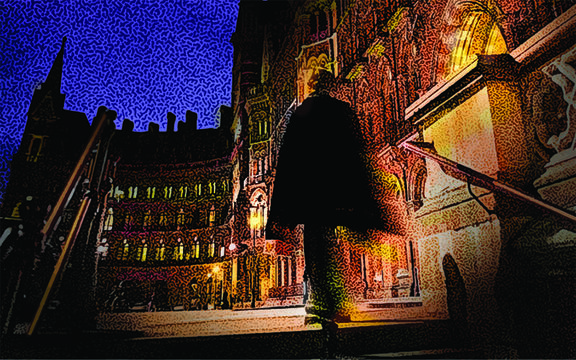
A magazine illustration from the time for an article on Jack the Ripper, "the criminal classes".Getty
The case of Jack the Ripper has long been one of Britain's most talked-about mysteries but does this evidence, taken from the shawl of a victim, finally reveal his identity?
Today, London's Whitechapel district is a popular destination for anyone visiting London. Travelers visit the gallery, take in the street art, and enjoy the many different food options that can be found in the area.
In 1888 however, this was not the case. Whitechapel was plagued with economic neglect and was an overcrowded slum riddled with poverty. This would prove to be the perfect area for Jack the Ripper to carry out his murders.
The crimes of Jack the Ripper
While Jack the Ripper was linked with many murders in the Whitechapel area, it is widely believed that there are five murders of a similar nature that can be credited without a doubt to the serial killer.
Mary Ann Nichols, Annie Chapman, Elizabeth Stride, Catherine Eddowes, and Mary Jane Kelly are all believed to have been Jack the Ripper's victims. The five women were all brutally murdered. Incisions to the throat and abdomen were something of a trademark for Jack the Ripper, leaving no doubts as to why he quickly spread fear and panic throughout the area.
Police worked hard to identify the killer but to no avail. The case of Jack the Ripper was particularly notable as it was the first of its kind in the sense that it created a media frenzy. The press was quick to jump on the story of the killer, which played a huge role in spreading fear and panic over the murders.

Whitechapel
The letters reportedly from Jack the Ripper
Throughout the police investigation, they received hundreds of letters claiming to be the killer. Of course, the majority of these letters could be cast aside as fraudulent, but one, in particular, stood out to the authorities as potentially genuine. A letter addressed as coming 'From Hell' was received by George Lusk of The Whitechapel Vigilance Committee. The letter came with a small box containing half a human kidney and claimed that the other half had been eaten.
The evidence that proves the identity of Jack the Ripper
Earlier in the year, DNA evidence emerged that suggests we can identify the true identity of Jack the Ripper. A shawl found by the body of Catherine Eddowes that contains 'forensic stains' has been used to identify the killer as Aaron Kosminski, a 23-year-old barber from Poland. The analysis also suggests the killer had brown eyes and hair, a description that Kosminski fit.

Satirical cartoon about Jack the Ripper
The Jewish immigrant has long been linked with the crimes, but this is the first piece of forensic evidence that gives any sort of clear proof as to the killer's identity. The Journal of Forensic Sciences published the study, who used DNA from a living relative of Kosminski. Kosminksi would go on to be put in an asylum following the alleged murders, where he died young.
While there are those who say we don't have enough evidence to name Kosminski as the killer, the DNA on the shawl undoubtedly brings us closer to knowing the true identity of Jack the Ripper.
* Originally published in Mar 2019.





Comments